PHOTO CREDIT: CASEY HANDLEY (CLEVERHIKER.COM)
The Soto Windmaster is touted as one of the absolute best backpacking stoves for its superior wind performance. But does it really outperform other canister stoves when the wind starts whipping?
We put the Soto Windmaster to the test against the other top backpacking stoves on the market to find out if it truly lives up to its name.
QUICK SPECS
MSRP: $70
LISTED WEIGHT: 3.1 oz. (with 4Flex Support)
MEASURED WEIGHT: 3.1 oz. (with 4Flex Support)
FUEL TYPE:Isobutane/propane canister
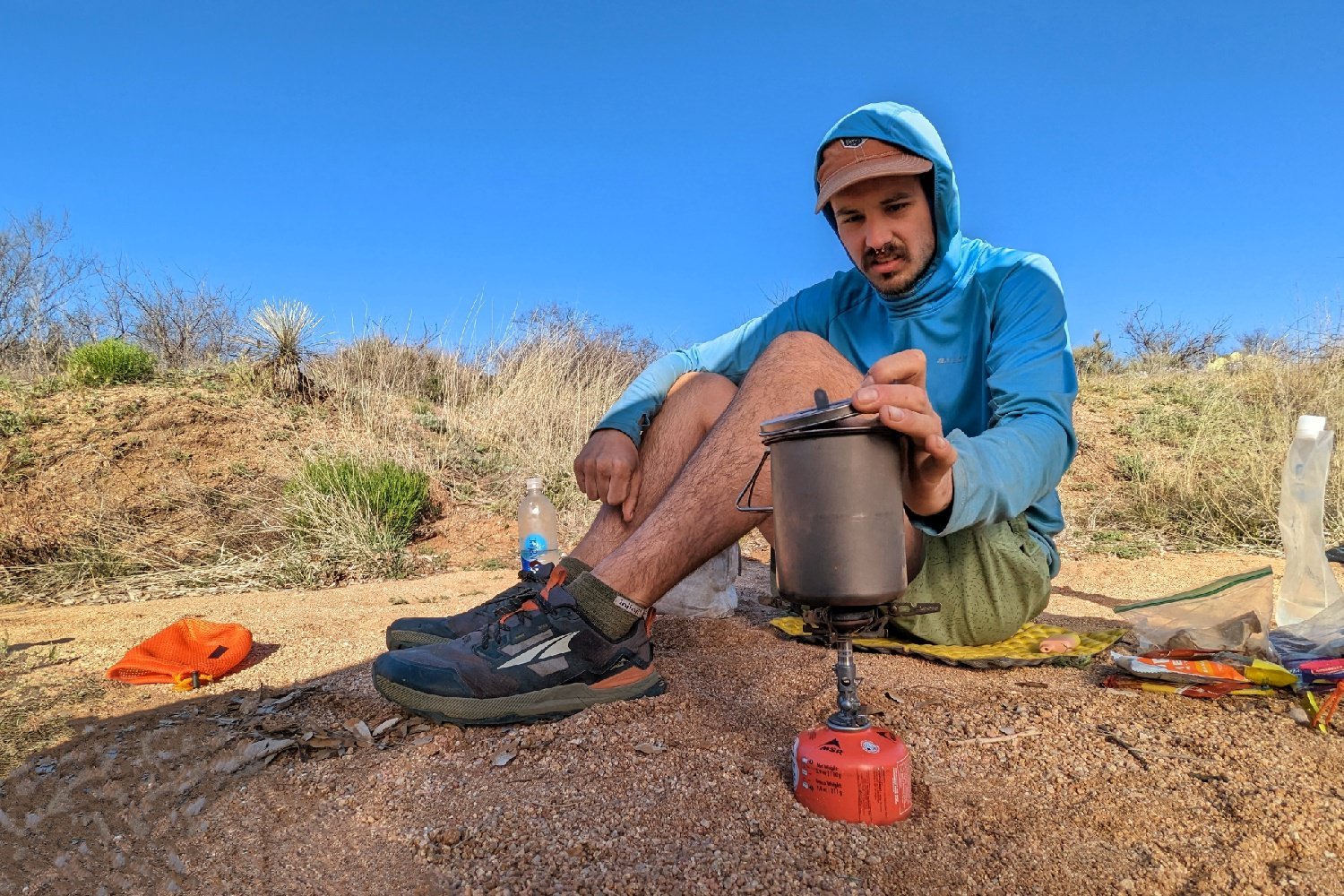
PHOTO CREDIT: CASEY HANDLEY (CLEVERHIKER.COM)
PROS
Excellent wind performance – We’ve used the Windmaster in some pretty windy conditions – exposed washes in the Sonoran desert, high-elevation ridges in the Cascades, and sprawling lava flows in Central Oregon. And we have to say, we’ve been very impressed with the performance of this stove every time.
The reason many stoves struggle to work efficiently in the wind is because there’s too much open space between the burner and the pot. The Windmaster is designed with a lip around the burner to block some wind at the source of the flame, and the pot sits relatively close to the burner head compared to other leading stoves.
The Pocket Rocket Deluxe is very similar in design with its recessed burner, but the arms of Pocket Rocket aren’t attached to the burner head like the arms on the Windmaster are. The Pocket Rocket design leaves more space for wind to cut the efficiency of your flame.
While the performance of all stoves will be affected by the wind in some capacity, we have found the Windmaster to be noticeably better in the wind than other canister stoves.

PHOTO CREDIT: CASEY HANDLEY (CLEVERHIKER.COM)
Lightweight – With the included 4Flex Pot Support, the Windmaster weighs only 3.1 oz. And hikers who were previously carrying a windscreen with a different stove can save some weight by ditching it for the superior wind performance of the Windmaster.
Compared to other stoves on our list of the Best Backpacking Stoves, the Windmaster is the fourth lightest. That said, the top five lightest stoves on the list range from 1 oz. to 3.2 oz. – not a dramatic difference. The Pocket Rocket Deluxe is probably the closest in design to the Windmaster – it weighs 2.9 oz., or 0.2 oz. less than the Windmaster.
Hikers who are really looking to shave every bit of weight and bulk without sacrificing the great wind performance can save around 20 grams (0.7 oz.) by getting the TriFlex Pot Support. We’ll dive a little deeper into the TriFlex later in this review.
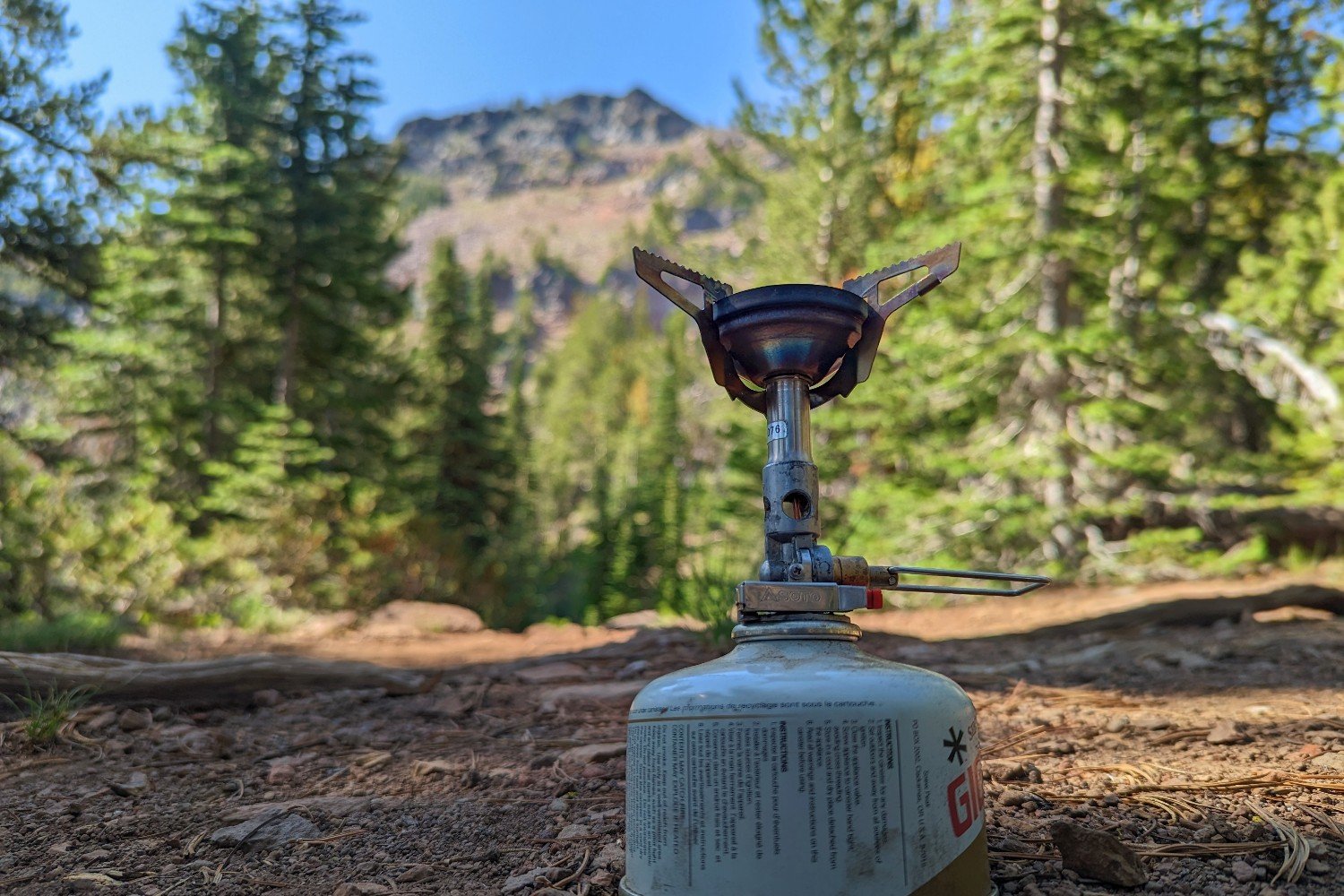
Good simmer control/efficient boiling – The Windmaster allows for a good range of control over your flame, so you can boil quickly or simmer slowly for the perfect backcountry meal. We think there are too many factors that go into boil times to make that a truly accurate comparative measurement. But SOTO claims the Windmaster can boil 2 cups of water in less than 2.5 minutes, which we find to be generally accurate under normal conditions.
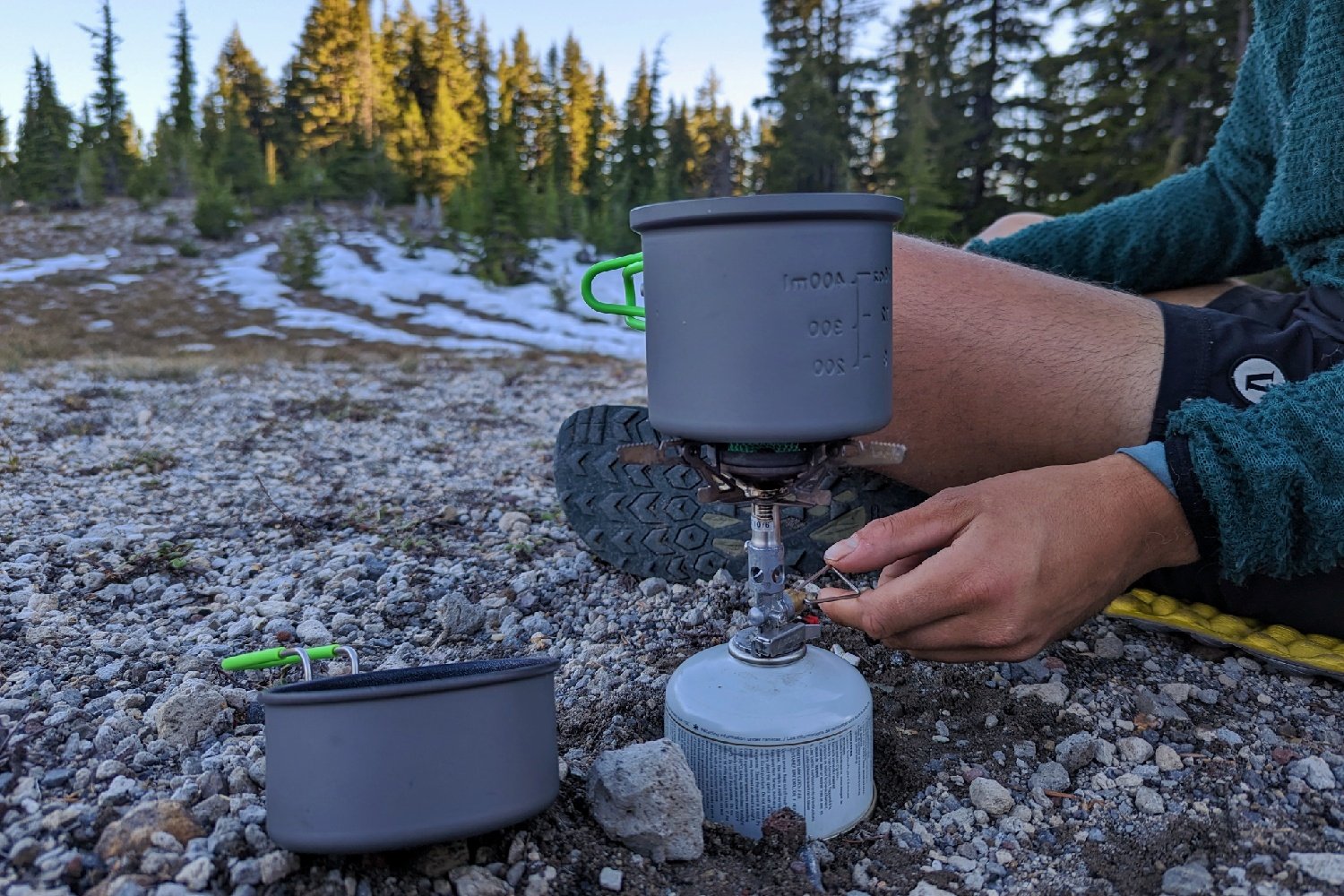
PHOTO CREDIT: CASEY HANDLEY (CLEVERHIKER.COM)
Stable 4-prong pot support – One of our favorite things about the Windmaster is the strong and stable 4Flex Pot Support that comes with it. This support allows you to use larger pots with the Windmaster, without the stove struggling under the weight or your pot becoming unbalanced.
The outstanding pot support is especially great for couples who prefer to share a single large pot for boiling water.
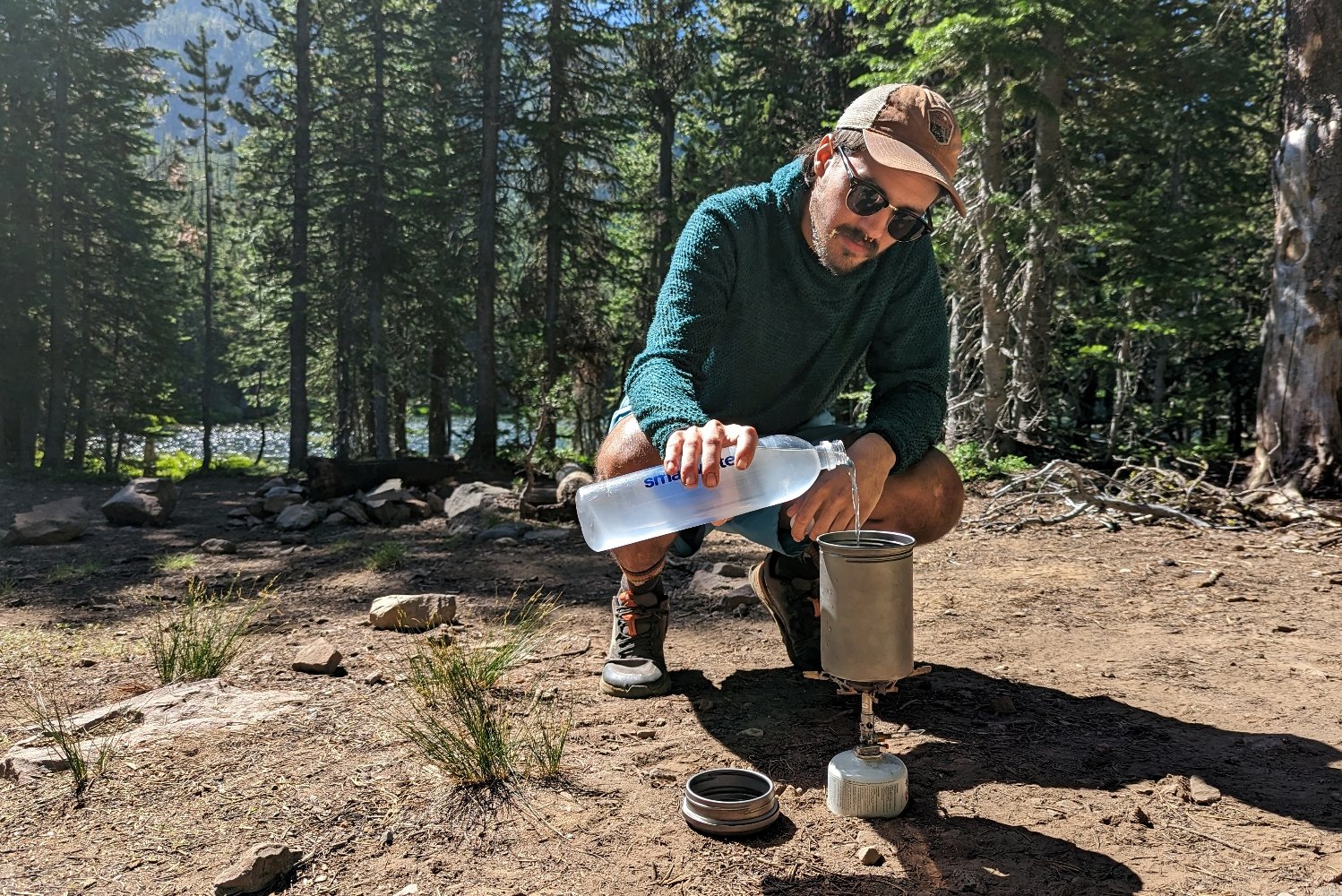
PHOTO CREDIT: CASEY HANDLEY (CLEVERHIKER.COM)
Interchangeable pot supports – A unique feature of the Windmaster is the ability to swap between the sturdy 4Flex Support (included with the Windmaster) and the ultralight TriFlex Support (sold separately).
We typically always prefer to take the 4Flex Support since it adds a lot of stability for a very small amount of weight over the TriFlex. But hikers who are counting every gram and use a smaller pot may prefer the 0.7 oz. weight savings of the TriFlex.
With the 4Flex, the Windmaster weighs 3.1 oz. – the fourth lightest stove on our list of the Best Backpacking Stoves. With the TriFlex, the stove about 2.4 oz. – the third lightest on our list.
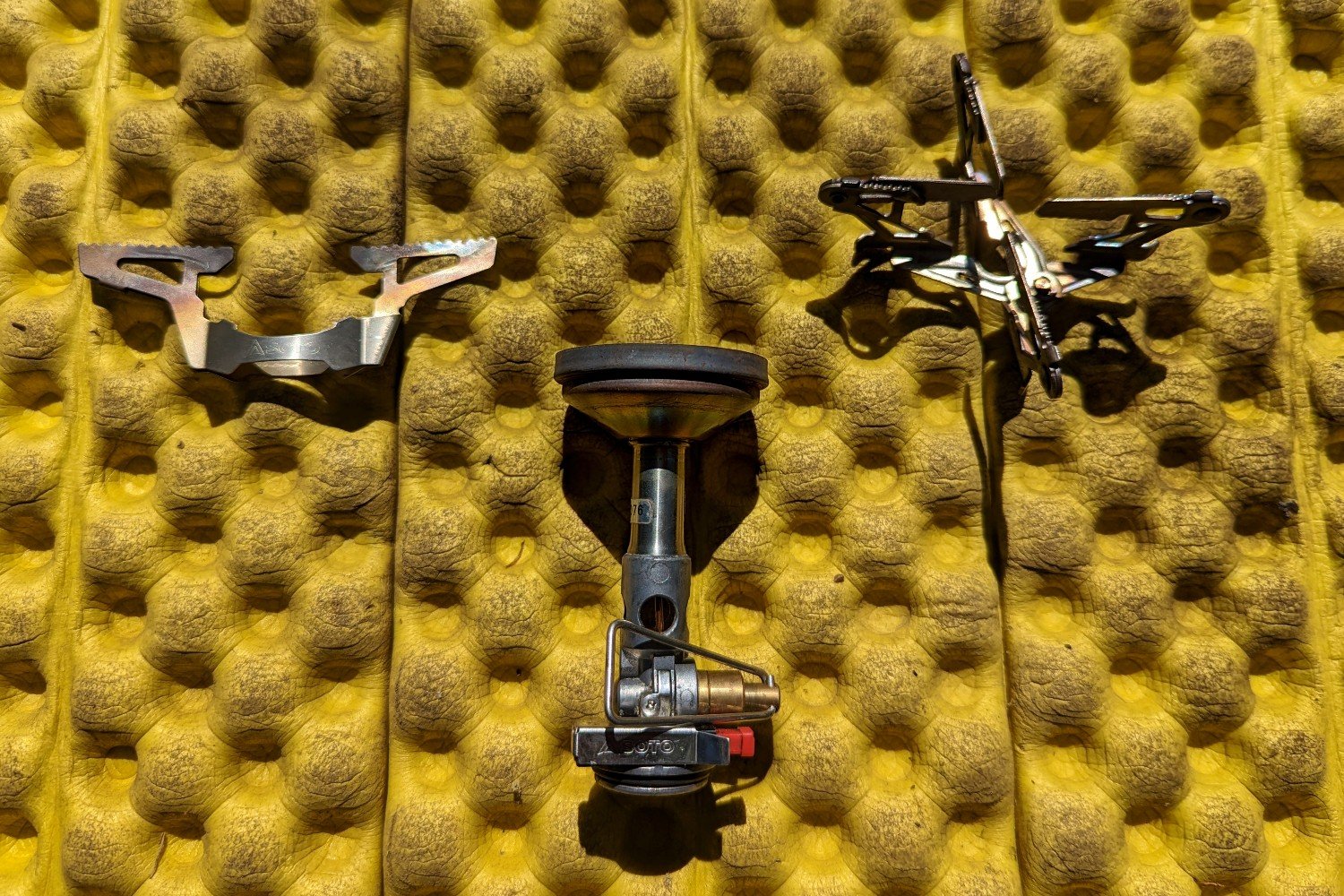
TriFlex Pot Support (left) & 4Flex Support(right) – PHOTO CREDIT: CASEY HANDLEY (CLEVERHIKER.COM)
Durable – This little stove is very durable for the weight. We’ve tested it on over 500 miles of trail with two hikers using it, and we expect it to last for several more years.
Piezo ignitor – This is a somewhat small perk, since we often find that the Piezo (push-button ignitor) is the first thing to fail on stoves. But it’s a convenient feature – especially in windy areas where it can be difficult to use a lighter.
As we mentioned above, though, the Windmaster is very well-made. And after 500+ miles of consistent use, the Piezo is still working beautifully and generally ignites on the first or second push. Either way, we always bring a Mini Bic as a backup fire source – even if our stove has a Piezo.
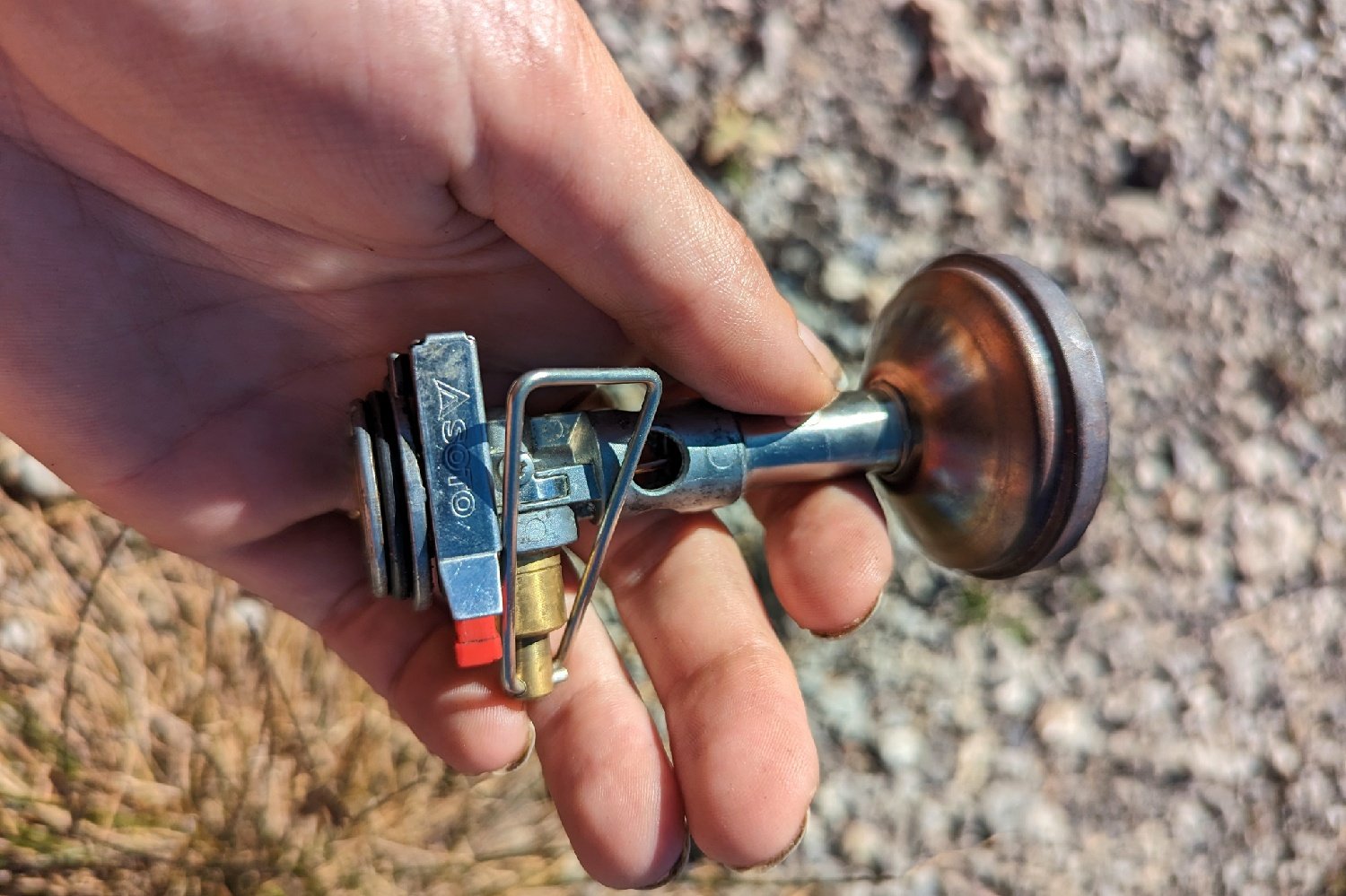
PHOTO CREDIT: CASEY HANDLEY (CLEVERHIKER.COM)
CONS
Expensive – The Windmaster is one of the most expensive canister stoves on our list of the Best Backpacking Stoves (not including integrated stove systems, like the Jetboil Flash). That said, it’s only $10 more than two of our other top picks -the MSR Pocket Rocket 2 and the Snow Peak LiteMax.
We think the Windmaster is worth the cost for hikers who often hike in windy areas – above treeline, in open deserts, or in coastal regions – since it will boil a lot more efficiently than many of the other top stoves.
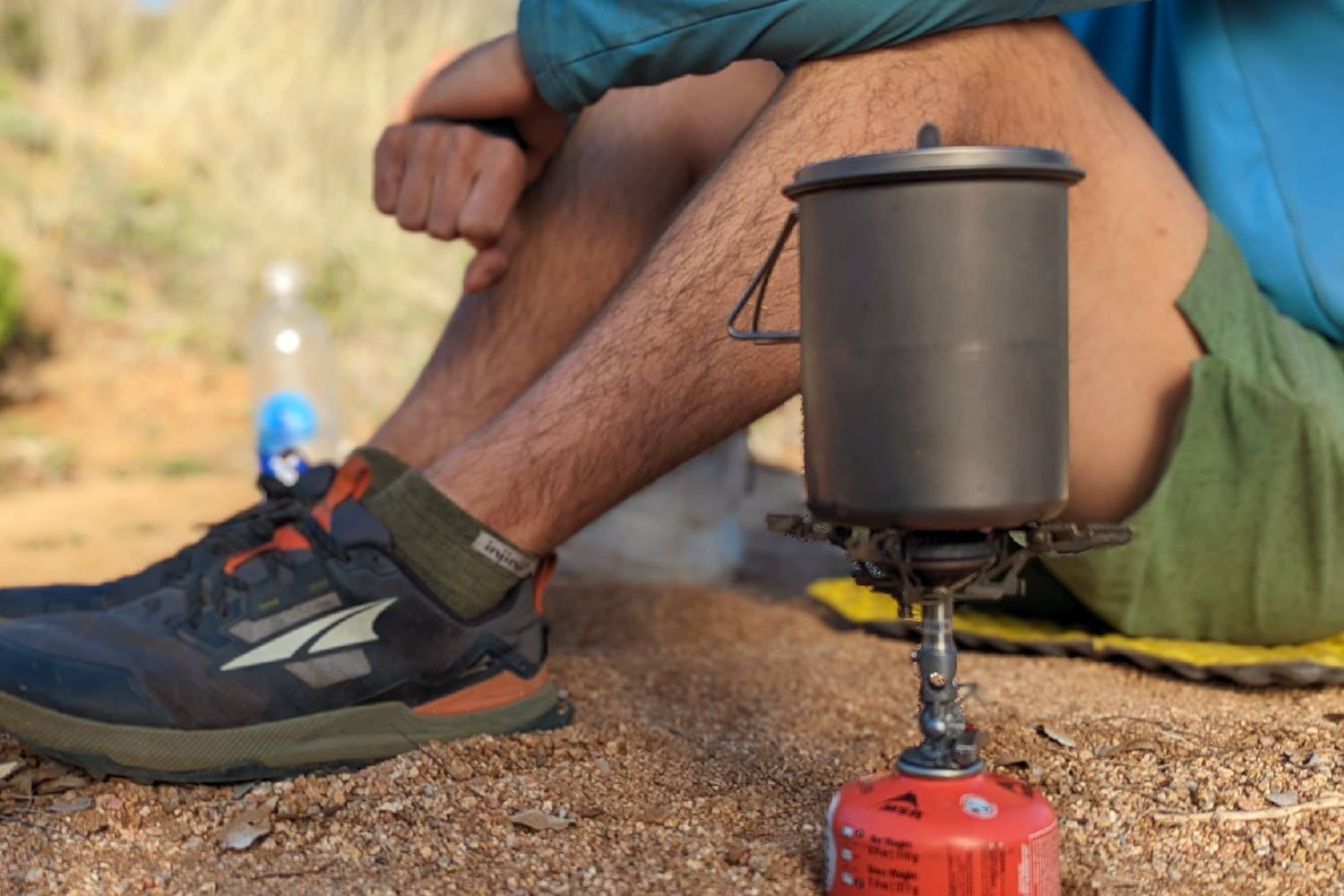
PHOTO CREDIT: CASEY HANDLEY (CLEVERHIKER.COM)
Bulkier than some – The Soto Windmaster is a bit longer than many other stoves, and the removable pot support – especially the 4Flex – is bulkier than the more common foldable arms on other stoves. It can be a bit tough to pack the Windmaster into smaller pots because of this. Even larger pots may not be able to accommodate the stove and a small fuel canister at the same time.
We usually just store the Windmaster separate from our cookpot in our food bag. This isn’t a dealbreaker, but it does require you to be a bit mindful of how things are packed so you don’t bend the arms on the pot support.
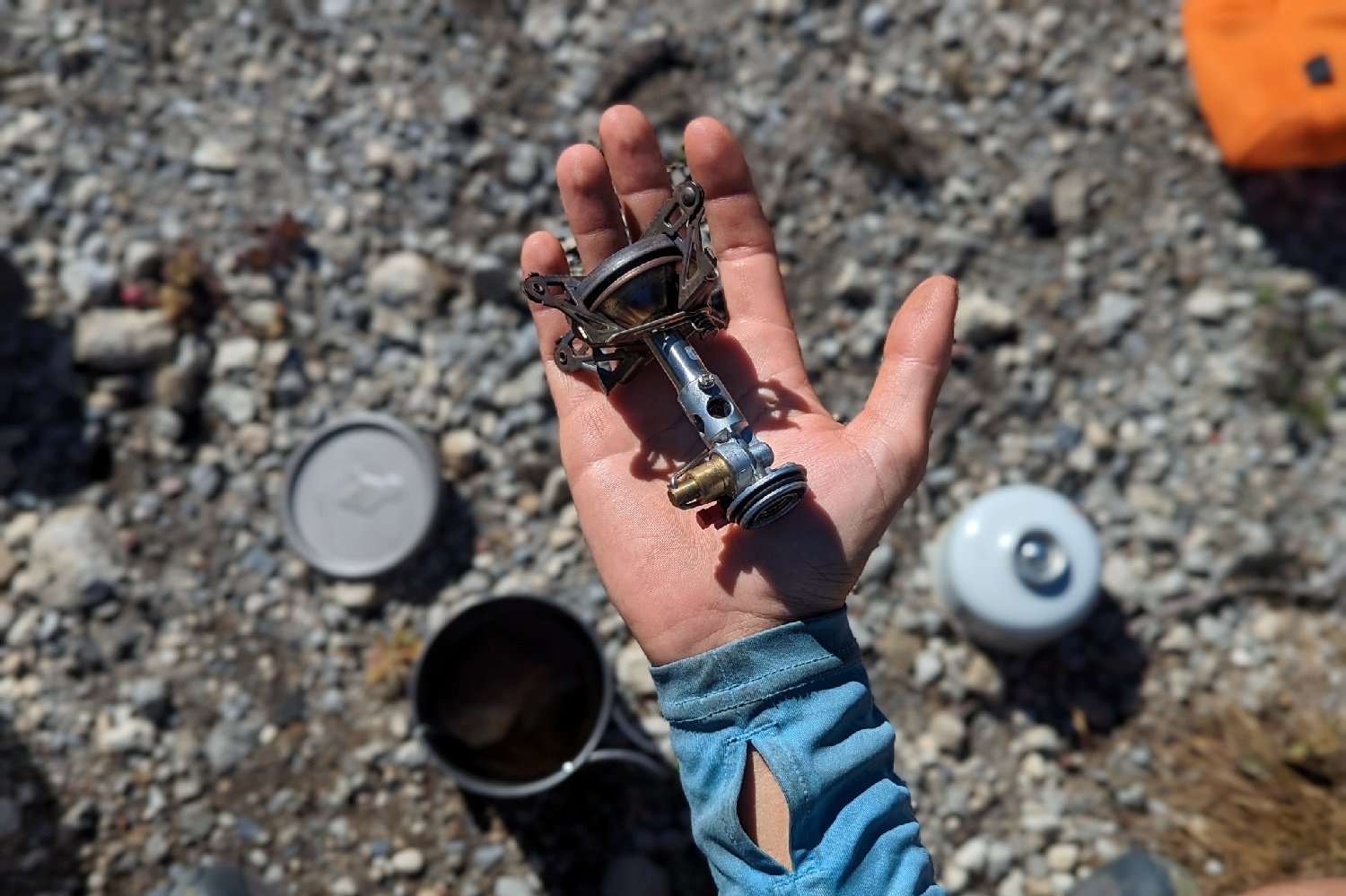
PHOTO CREDIT: CASEY HANDLEY (CLEVERHIKER.COM)
A bit easier to burn food if you’re not paying attention – One thing to keep in mind is that since your pot sits closer to the flame on the Windmaster than it does on many other canister stoves, you should keep a closer eye on the contents of your pot while you’re cooking/boiling. The more concentrated flame can overheat any food at the bottom of your pot a little more quickly than other stoves.
BOTTOM LINE
We’re big fans of the Soto Windmaster, and we highly recommend it to hikers who are over struggling against the wind to get a quick boil. Though it’s a bit on the expensive side for a canister stove, we think the Windmaster is worth every penny for its durability, stable pot supports, and efficiency. The Windmaster is one of our go-to stoves for exposed, windy areas and for hikes where we’re sharing a cookset with a partner. We’ve been whipping up delicious backcountry meals over hundreds of trail miles with this stove, and it’s one of our all-time favorites.
See how the Windmaster compares to our other favorites on our list of the Best Backpacking Stoves.
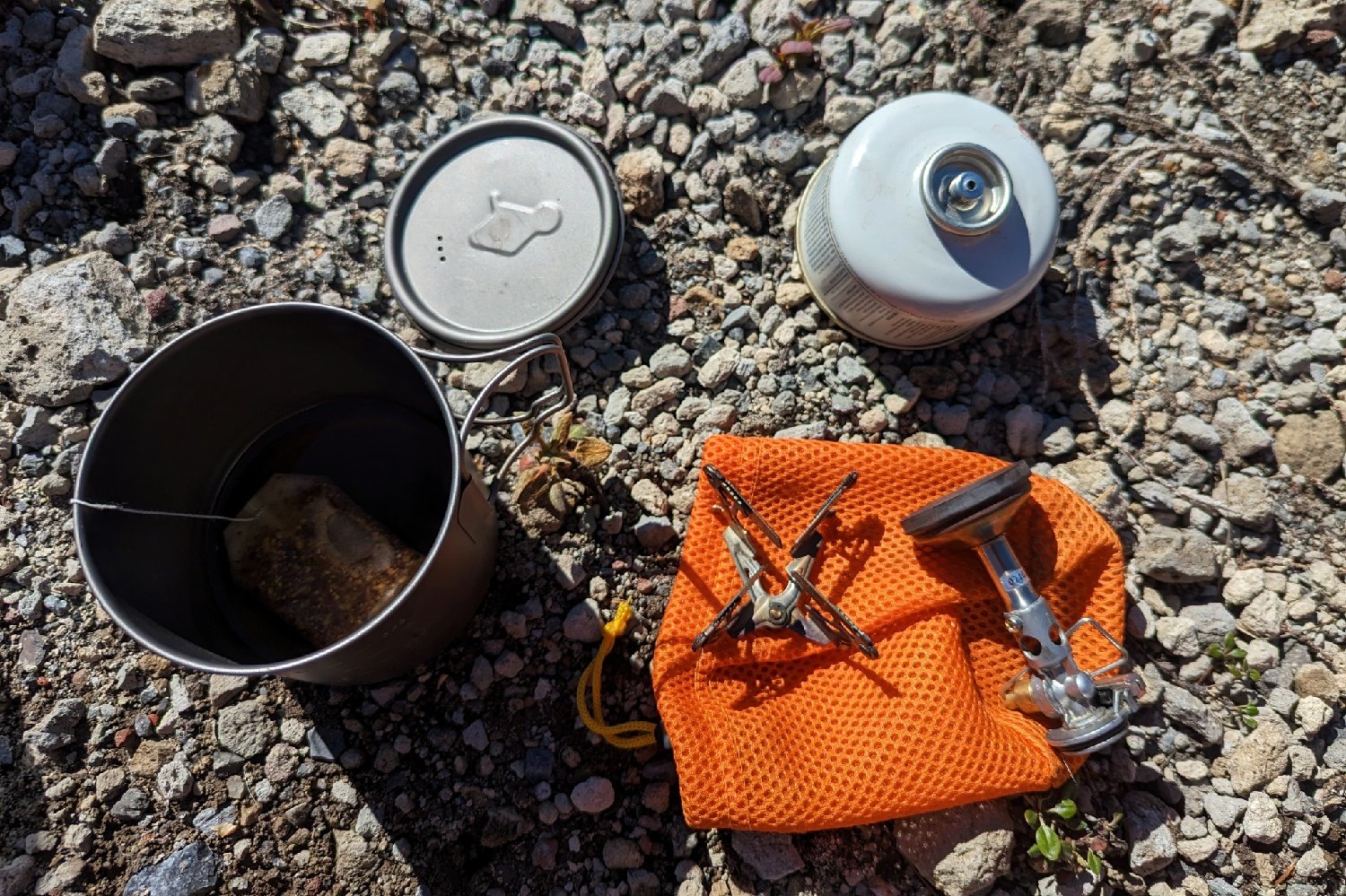
PHOTO CREDIT: CASEY HANDLEY (CLEVERHIKER.COM)
MORE INFORMATION
We hope this review helps you determine if the Soto Windmaster is right for you. As always, please leave a comment below if you have any recommendations, questions, or suggestions or visit our Facebook page and Instagram to join the community conversation. If you found this review helpful, please share on social media and click the little heart button below to give us a digital high five!
If you enjoyed this review, you’ll probably like our other gear lists as well. Here are some popular resources from the CleverHiker Gear Guide:
Some of the links on this page are affiliate links, which means we may receive a modest commission if purchases are made through those links. This adds no cost to our readers and helps us keep our site up and running. Our reputation is our most important asset, which is why we only provide completely honest and unbiased recommendations.

